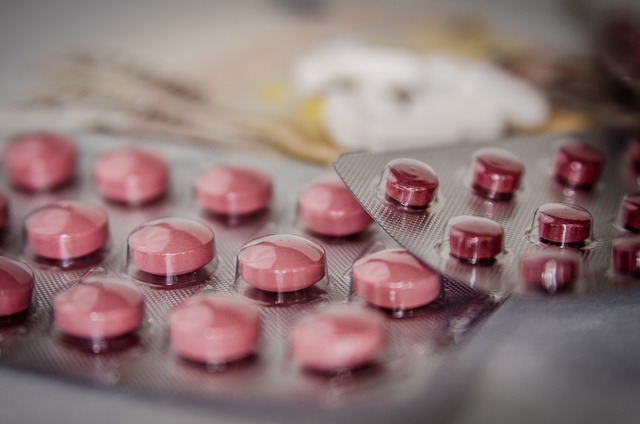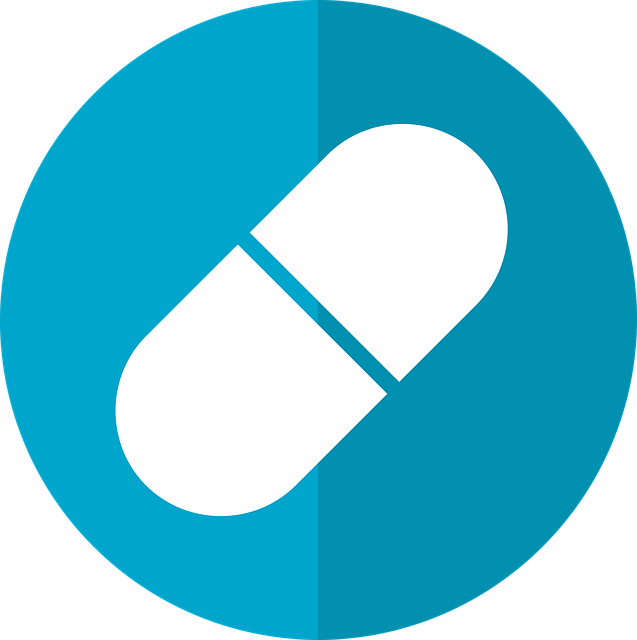GLP-1 receptor agonists (GLP-1 drugs) are medications that mimic natural gut hormones, improving insulin secretion and reducing glucagon release in response to food intake. They offer precise blood sugar control for type 2 diabetes patients by enhancing metabolic health and aiding in weight management through increased satiety. Administered via injections or oral medications, GLP-1 drugs come with side effects like gastrointestinal issues but can lead to better glycemic control and reduced insulin reliance. Combining these drugs with lifestyle modifications significantly enhances patient outcomes, and ongoing research focuses on improving their efficacy and delivery methods for tailored diabetes care.
GLP-1 receptor agonist therapies have emerged as a powerful tool in managing Type 2 diabetes, offering improved blood sugar control and weight management. This article delves into the world of GLP-1 drugs, exploring their potential benefits and challenges from a patient’s perspective. From understanding the basics to navigating side effects and real-life experiences, we uncover how these therapies are transforming diabetes care. Discover insights on administration methods, safety concerns, lifestyle integrations, and future innovations that personalize treatments.
Understanding GLP-1 Receptor Agonists: Unlocking the Therapy Potential

GLP-1 receptor agonists, or GLP-1 drugs, are a class of medications designed to mimic the effects of natural gut hormones, enhancing insulin secretion and suppressing glucagon release in response to food intake. This dual action helps lower blood sugar levels, making them a promising therapy for type 2 diabetes management. By understanding how these drugs interact with the body’s natural systems, patients can better appreciate their potential as an effective and safe treatment option.
These GLP-1 drugs have shown promise not only in glycemic control but also in weight management, offering a multifaceted approach to improving overall health. Their ability to reduce appetite and increase feelings of fullness makes them valuable tools in the fight against obesity. As research continues, the therapeutic potential of GLP-1 receptor agonists extends beyond diabetes, suggesting a brighter future for patient care and well-being.
The Role of GLP-1 Drugs in Managing Type 2 Diabetes

GLP-1 drugs play a pivotal role in managing Type 2 Diabetes, offering a targeted and effective approach to blood sugar control. These medications mimic the action of the natural hormone GLP-1, which is secreted in response to food intake. By mimicking this hormone, GLP-1 drugs stimulate insulin production and suppress glucagon secretion, leading to improved insulin sensitivity and reduced blood glucose levels.
The benefits extend beyond blood sugar regulation. GLP-1 drugs are known for their weight management effects, as they increase feelings of fullness and reduce appetite, leading to a decrease in calorie intake. This dual action makes them a valuable tool in the comprehensive management of Type 2 Diabetes, addressing both the metabolic and weight-related aspects of the condition.
Patient Benefits: Improved Blood Sugar Control and Weight Management

Patient benefits from GLP-1 receptor agonist therapies are multifaceted, with two primary advantages being improved blood sugar control and weight management. These drugs, often referred to as GLP-1 drugs, have shown significant potential in helping individuals with type 2 diabetes achieve better glycemic levels. By mimicking the effects of the natural hormone glucagon-like peptide-1 (GLP-1), these therapies enhance insulin secretion when blood sugar is high and reduce glucose production by the liver, leading to more stable blood sugar levels throughout the day.
Moreover, GLP-1 drugs contribute to weight management by increasing feelings of fullness and reducing appetite, which can lead to a decrease in overall calorie intake. This dual action not only improves metabolic health but also supports patients in their efforts to lose weight and maintain a healthier lifestyle. The combination of better blood sugar control and effective weight management makes these therapies a game-changer for many individuals living with diabetes.
Administering GLP-1 Therapies: Injections vs. Oral Medications

GLP-1 receptor agonist therapies are typically administered through two primary methods: injections and oral medications. Injections involve a healthcare provider administering the drug directly into the patient’s muscle or fat, offering precise dosage control and consistent absorption. This method is often preferred for patients who require higher doses or have difficulty absorbing oral medications effectively.
Oral GLP-1 drugs, on the other hand, provide a more convenient approach, allowing patients to self-administer with a prescription. These medications are usually taken once or twice daily and are designed to be easily absorbed through the digestive system. However, oral formulations may have lower bioavailability compared to injections due to metabolic breakdown in the gut, requiring higher doses for comparable effects.
Common Side Effects and Their Management

GLP-1 receptor agonist therapies, while highly effective in managing diabetes and promoting weight loss, are not without their side effects. Common experiences include gastrointestinal issues like nausea, vomiting, and diarrhea, which often improve over time as the body adjusts to the medication. These GLP-1 drugs can also cause stomach pain and constipation. To manage these symptoms, healthcare providers may recommend dietary adjustments, such as eating smaller meals more frequently and increasing fiber intake to alleviate constipation. Additionally, patients are advised to stay hydrated and discuss any persistent or severe side effects with their doctor.
Another potential challenge is the risk of hypoglycemia, particularly when GLP-1 therapies are combined with other diabetes medications. Hypoglycemic episodes can be managed through diet and lifestyle changes, as well as by closely monitoring blood sugar levels. Patients are encouraged to work closely with their healthcare team to adjust medication dosages or types if necessary, ensuring a safe and effective treatment experience.
Real-Life Patient Stories: Navigating GLP-1 Drug Experiences

In the realm of diabetes management, GLP-1 receptor agonists have emerged as a game-changer for many patients. Real-life patient stories reveal a diverse range of experiences with these innovative drugs. Some individuals find them to be a blessing, effectively lowering blood sugar levels and offering a significant improvement in overall health. These therapies, often administered through injections or oral medications, can lead to reduced reliance on insulin and enhanced metabolic control.
However, not every patient’s journey is smooth. Navigating GLP-1 drug experiences may involve dealing with side effects like nausea, vomiting, or diarrhea, which can be particularly challenging for those accustomed to traditional diabetes management methods. Despite these potential hurdles, many patients persist, driven by the promise of improved glycemic control and a higher quality of life. Their stories underscore the importance of personalized treatment approaches and close monitoring in optimizing GLP-1 drug therapy outcomes.
Addressing Patient Concerns: Safety, Long-term Effects, and Compliance

Many patients have concerns about starting GLP-1 receptor agonist therapies, primarily focusing on safety and long-term effects. This is understandable given the newness of these drugs in the market. However, extensive research and clinical trials have proven their safety profile, similar to that of other medications used for diabetes management. Side effects are typically mild and include nausea, vomiting, diarrhea, and abdominal pain, often manageable with adjustments in dosage or meal timing.
Compliance is another common worry, but GLP-1 drugs offer flexibility compared to traditional insulin regimens. They can be administered once daily or through weekly injections, making them easier to incorporate into daily routines. Moreover, their ability to stimulate natural insulin release and reduce appetite can lead to better blood sugar control, which may improve patient adherence over time.
Combining GLP-1 Agonists with Lifestyle Modifications

Combining GLP-1 agonist therapies with lifestyle modifications can significantly enhance patient outcomes. These drugs, known as GLP-1 drugs, work by mimicking the body’s natural hormones to regulate blood sugar levels and promote weight loss. When paired with a healthy diet, regular exercise, and behavioral changes, the effects of GLP-1 drugs are amplified. For instance, patients may experience improved insulin sensitivity, better glycemic control, and accelerated weight reduction.
Lifestyle modifications serve as a complementary approach, empowering patients to take an active role in their health management. Dietary adjustments, such as reducing sugar intake and focusing on whole foods, along with regular physical activity, can reinforce the benefits of GLP-1 drugs. This holistic strategy not only optimizes blood sugar levels but also promotes overall well-being, making it a powerful tool in managing diabetes and supporting sustainable weight loss.
Future Prospects: Personalized Treatments and Research Innovations

The future of GLP-1 receptor agonist therapies looks promising, with a growing emphasis on personalized treatments tailored to individual patient needs. Ongoing research aims to improve existing GLP-1 drugs by enhancing their efficacy, reducing side effects, and optimizing delivery methods. Scientists are exploring new ways to target specific GLP-1 receptors, which could lead to more precise control of blood sugar levels. Personalized medicine approaches, such as genetic testing, may help identify patients who will respond best to certain GLP-1 therapies, ensuring optimal treatment outcomes.
Additionally, technological advancements are driving innovation in GLP-1 drug administration. Research is focused on developing long-acting injections and even oral formulations that bypass intestinal degradation, offering more convenient and effective options for patients. These innovations hold the potential to significantly improve patient experiences, adherence to treatments, and overall glycemic control in diabetes management.
